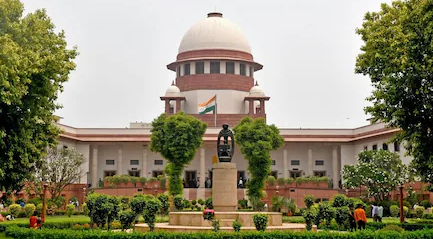Supreme Court Upholds Section 6A of the Citizenship Act: Detailed Analysis (GS Paper 2, Governance)

Introduction
- On October 19, 2024, the Supreme Court of India delivered a landmark judgment affirming the constitutionality of Section 6A of the Citizenship Act, 1955.
- This section provides a framework for granting citizenship to certain Bangladeshi immigrants in Assam, a provision that stems from the Assam Accord of 1985.
- The ruling holds significant implications for the demographic, cultural, and political landscape of Assam and India as a whole.
Context and Background
- Historical Context: The influx of immigrants from Bangladesh into Assam has been a contentious issue since the Bangladesh Liberation War in 1971. Following the war, large numbers of people migrated to Assam, often leading to tensions over cultural identity and resource allocation. The Assam Accord was aimed at addressing these challenges by establishing cut-off dates for citizenship eligibility.
- Assam Accord of 1985: This tripartite agreement between the Government of India, the Government of Assam, and the leaders of the Assam Movement sought to curb illegal immigration and ensure the preservation of Assamese culture and identity. Section 6A was introduced as a legislative response to the Accord, distinguishing between immigrants based on their entry date.
Key Features of Section 6A
- Cut-off Dates:
- Immigrants who entered Assam before January 1, 1966, are granted Indian citizenship.
- Those arriving between January 1, 1966, and March 25, 1971, can secure citizenship after fulfilling specific conditions.
- Citizenship is denied to anyone who entered after March 25, 1971, marking a critical cut-off aligned with historical events during the Bangladesh Liberation War.
- Legal Justification: The section operates within the framework of Articles 246 and 14 of the Constitution, which governs citizenship and ensures equality. The court recognized Assam's unique demographic challenges as a valid reason for differentiated treatment.
Supreme Court’s Ruling
Majority Opinion:
- Constitutional Validity: The court found that Section 6A does not violate Articles 6 and 7 of the Constitution, reaffirming its legality based on historical contexts and provisions for citizenship.
- Cultural Protections: The majority opinion underscored that existing constitutional safeguards protect Assamese cultural and linguistic rights. The court noted that the petitioners did not sufficiently demonstrate that Section 6A undermines these rights.
- Government Accountability: The ruling highlighted that the government’s ineffective management of post-1971 immigration is a significant factor in Assam's demographic situation, rather than the provisions of Section 6A.
- Judicial Oversight: The court emphasized the need for a dedicated bench to monitor the implementation of citizenship laws, reflecting concerns about the current enforcement mechanisms.
Dissenting Opinion:
- The dissenting judges argued that Section 6A is unconstitutional, stating that it creates a framework where the rights of different ethnic groups could infringe upon each other.
- The dissent also pointed to potential conflicts between sustainable development and immigration, cautioning against restrictive measures that might harm inter-state movement.
Implications of the Judgement
- Legal Protection for Immigrants: The judgment provides continued citizenship rights for immigrants from Bangladesh who arrived before the cut-off date, reinforcing India's humanitarian commitment to those displaced during the Bangladesh Liberation War.
- Cultural and Linguistic Rights: The ruling reassures the Assamese people that their cultural identity is safeguarded through constitutional mechanisms, despite concerns about demographic changes.
- Demographic Tensions: The judgment could heighten tensions regarding immigration in Assam, as local communities may increasingly voice concerns about their cultural identity and resource allocation.
- Resource Strain: Granting citizenship to immigrants raises questions about resource distribution in Assam, which may already be facing economic challenges. Policymakers will need to ensure that resource allocation is equitable to prevent further disparities.
- Immigration Law Enforcement: The ruling stresses the urgent need for effective enforcement of immigration laws. It points out the inadequacies in the current systems tasked with identifying and deporting illegal immigrants, particularly those who entered after 1971.
- Regional Diplomatic Relations: By not recognizing post-1971 immigrants as citizens, the judgment may strain relations with Bangladesh, which could complicate regional cooperation on migration and border management. This could lead to diplomatic tensions as India navigates its responsibilities toward refugees.
- Political Dynamics: The ruling is likely to influence political discourse in Assam, potentially leading to increased mobilization around issues of cultural preservation and immigration control. Political parties may leverage these sentiments to rally support, affecting local and national elections.
Conclusion
- The Supreme Court's upholding of Section 6A of the Citizenship Act is a pivotal moment in India's ongoing struggle with immigration, cultural identity, and social cohesion.
- While it seeks to balance the rights of immigrants with the concerns of local populations, the implications for Assam's demographics, resource allocation, and regional relations require careful navigation.
- Moving forward, it will be crucial for policymakers to address these challenges with sensitivity and foresight, ensuring that the rights and identities of all communities are respected and preserved.


